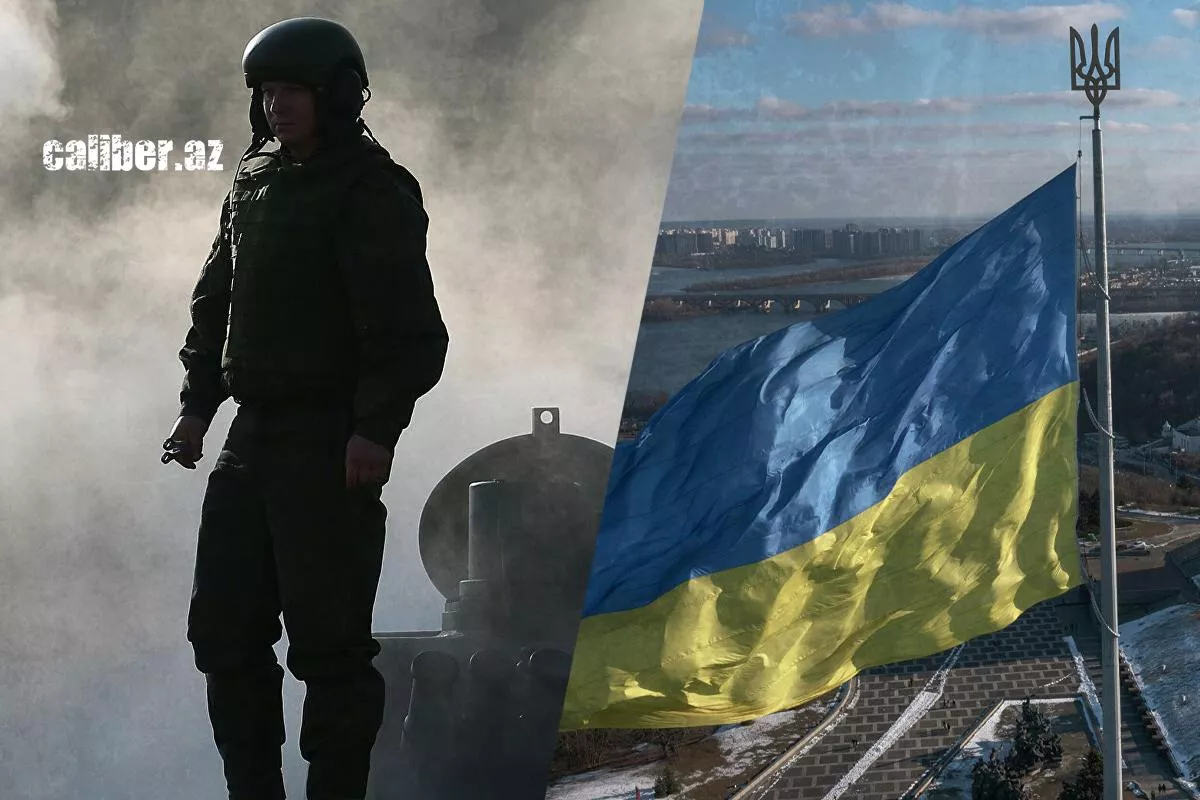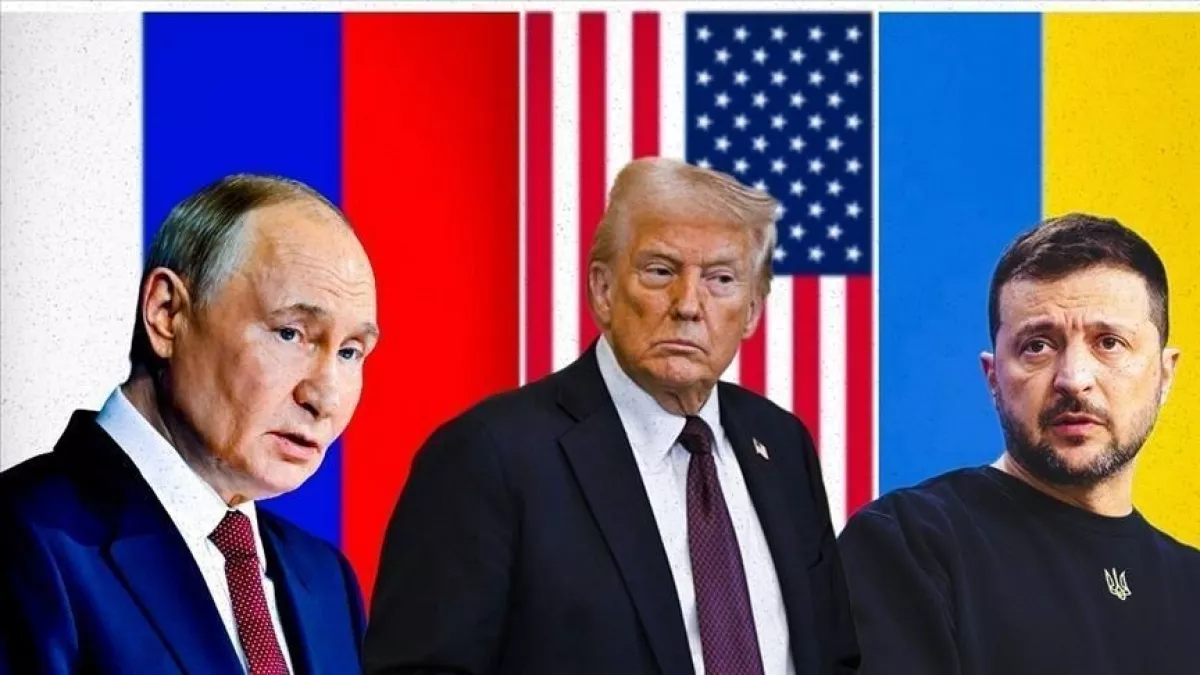Trump’s peace plan: a global information bomb Is the Russia-Ukraine war entering its final stage?
Trump’s peace plan to end the Russia-Ukraine war has shocked and drawn scepticism in many corners of the world. However, for the first time since February 2022, basic conditions are emerging that could support a negotiation process rather than an all-out focus on the battlefield. On this basis, one can conclude that the war is entering its final stage.
The news that the United States has prepared a new plan to resolve the Ukrainian conflict became a true global information bomb. It had an explosive effect in political circles of many countries, including Ukraine and the European Union. At the very least, many officials in these countries are upset that they were not consulted in advance about the plan’s content and were not informed about the preparatory work being carried out (which, in fact, is not entirely accurate). Even the Russian side has stated that the American plan’s points have not yet been formally discussed with them, although the text was transmitted through special channels.
Trump’s 28-point plan
Despite numerous press publications of the 28 points presented by Donald Trump’s administration, the plan’s exact content remains unknown and has not been officially confirmed. However, based on various indications—including comments from Ukrainian and Russian leadership—it appears that the list leaked to the public is indeed close to the original. Nevertheless, it is reasonable to assume that some differences may exist between the media version and the actual plan.
At this stage, any ideas expressed or even written down should be seen as framework proposals for further negotiations rather than as final formulations of a proposed agreement package. American negotiators themselves emphasise that they view the 28-point draft as a “living document” that can change during diplomatic discussions. According to some reports, several amendments have already been made following preliminary reactions from Washington’s counterparts.
In any case, we will not list all the points of the draft document that appeared in the media. Instead, let us focus on some important contextual factors.
Parallels with Istanbul
In Trump’s 28 points, it is not difficult to trace parallels with the very first version of a peace agreement, which was discussed at the beginning of the war during three meetings in Belarus and later in Istanbul. According to the Russian side, following the negotiations in Istanbul on March 29, 2022, the agreement was even initialled by the heads of the delegations of both countries. Kyiv, however, insists that it did not truly agree to anything at that time and merely used the negotiations to buy time and improve its positions on the battlefield.

In any case, the current Trump peace plan is, in many respects, similar to the Istanbul draft agreement. It is certainly very different from alternative proposals put forward by Ukraine and its supporters, which were backed by Joseph Biden’s administration—for example, Volodymyr Zelenskyy’s “peace formula,” which essentially implied Russia’s capitulation.
On this basis, many commentators are now claiming that Washington’s proposals amount to Kyiv’s capitulation. Indeed, most of the 28 points do not align with Ukraine’s stated demands at all and, in many respects, reflect Russia’s requirements. Moreover, considering the territorial concessions envisaged for Kyiv under Trump’s plan, the current proposals actually appear stricter than the Istanbul draft—a fact that is hardly surprising given the developments and dynamics on the battlefield.
However, some points in Trump’s plan are more favourable to Kyiv. For instance, the plan specifies the size of Ukraine’s armed forces that would remain after a peace agreement. The American draft sets this at 600,000 personnel, whereas in Istanbul, Kyiv insisted on 250,000, and Moscow demanded just 85,000.
But the most important difference concerns security guarantees. If the United States is indeed prepared to provide Ukraine with guarantees similar to NATO’s Article 5 (despite the abstract nature of that article, as we have noted before), this could become a significant positive factor for the Ukrainian leadership. Even if the guarantees are limited to a ten-year period, and it remains unclear how Moscow would respond, politically—that is, to give the Ukrainian authorities an argument in support of a future agreement before their own society—this could be appealing. Similarly, prospects for EU accession, even if, as we have previously noted, they remain, to put it mildly, abstract and rhetorical, may also be of interest.
A peace plan from Anchorage to Budapest?
Despite the astonished and indignant reactions from many European capitals to the allegedly sudden appearance of this peace plan, it is clear that its main points have, in one form or another, been discussed for some time—at least since mid-summer. Particularly before and after the U.S.–Russia summit in Alaska on August 15.
Following the Alaska summit, no substantive comments were made—neither in the joint statements of the two presidents to the press, nor afterwards. As a result, there was no public understanding of what exactly Putin and Trump had discussed behind closed doors. Just a few days after the Anchorage summit, the media agenda shifted to Kyiv and European capitals’ efforts to convince Donald Trump not to trust Moscow’s promises and not to pressure Ukraine until Russia agreed to an unconditional ceasefire. Understandably, the Russian leadership could not—and still cannot—accept such conditions. Nevertheless, Washington at the time decided to try to compel Moscow toward greater compliance through new sanctions.
As a result, the question of what exactly was discussed in Anchorage and why Donald Trump was optimistic about the prospects for a diplomatic process disappeared entirely from the media. It was as if nothing had happened there beyond ceremonial pomp and general political discussions. But that was not the case.
Apparently, the framework of the 28-point plan now circulating in the media had already been discussed prior to the Alaska summit. During a personal meeting with his American counterpart, Vladimir Putin confirmed Russia’s readiness to work with the U.S. toward its implementation. This was hinted at in remarks occasionally made by Russian and American officials over the past months—and now the Russian president himself has stated it directly.
This continuity with the Alaska summit only reinforces the view of many commentators that the Trump administration’s new attempt to push for substantive negotiations is doomed to fail. As in the summer, the plan in all its aspects is simply unacceptable both to Kyiv and to European capitals. Consequently, in the coming days, we can expect Washington to “change the record” once again and turn to new pressure on Moscow.
Ukraine and many EU states indeed do not hide their extremely negative stance toward the American 28 points. Volodymyr Zelenskyy recorded a special address to the nation, highlighting the core dilemma for Kyiv: “Either a loss of dignity, or a loss of a key partner.” Here, as they say, no further comment is needed. At the same time, neither the Ukrainian president nor his European allies can simply reject the U.S. proposals outright. On the contrary, they emphasise their readiness and willingness to engage in the negotiation process. And the reason for this is not only the fear of losing a “key partner” in the form of the United States, but also the broader situation inside and around Ukraine.
The situation is changing significantly
Since the beginning of this year, when Donald Trump returned to the White House and began actively seeking ways to end the hostilities in Ukraine, we have witnessed numerous statements, actions, and events that at the time could have seemed pivotal. However, all of them ultimately “drowned” in the relentless logic of the war.
That said, it cannot be claimed that previous U.S. attempts to bring Moscow and Kyiv to the negotiating table—or American policy on this and related fronts—had no effect at all. Some elements of the overall conflict began to shift from the very first steps of the Trump administration. Along with these changes, the international atmosphere surrounding the war also evolved—sometimes in ways conducive to negotiations, and at other times toward greater escalation.

Moreover, it was clear from the outset that the overall direction of the new American administration (despite differences and even contradictions within it) would frame the Ukrainian conflict within the broader picture of Washington’s strategic interests and needs. In that context, the absolute priority is competition with China, which makes it crucial not to become further entangled in the Russia-Ukraine conflict and to maintain at least a basic level of constructive relations with Moscow. These strategic considerations clearly required the U.S. to make real efforts to influence the course of the war in Ukraine toward de-escalation and, if possible, a cessation of hostilities.
Nevertheless, the swings in the U.S.–Russia dialogue and the corresponding shifts in Washington’s talks with Ukraine and European allies had already begun to seem routine. For this reason, Trump’s new peace plan, despite its explosive media effect, is often perceived as just another flare-up of Washington’s media-diplomatic activity.
However, this does not seem entirely accurate. There may still be many more waves and surges of diplomatic effort ahead. But for the first time since February 2022, basic conditions are emerging that could genuinely support a negotiation process rather than an all-out reliance on the battlefield.
Traditionally, the conditions for a substantive diplomatic process and for achieving real, long-term peace agreements arise in two situations. Either when both sides recognize that the military conflict has reached a deadlock and that neither can achieve more on the battlefield. In such cases, delaying negotiations only leads to greater losses and exhaustion for both parties, and therefore further worsens the prospects for returning to peaceful life and reconstruction.
Or when one side comes to realize that it is doomed to complete military and political defeat. In this scenario, postponing negotiations will only result in higher casualties, greater infrastructural destruction, and harsher final terms of peace.
We dare to assert that, in recent months, the second scenario has begun to take shape before our eyes. Increasing signs indicate that the military-political and economic models on which Ukraine’s defence strategy has relied for almost four years are starting to fail systematically and crumble. This applies to the dynamics on the battlefield: this year, Russian forces, despite suffering huge losses, are advancing at least 80% faster than last year. It also concerns the physical and moral condition of Ukraine’s armed forces, which are experiencing record levels of desertion, and the economic situation, as the current financial model for keeping the country afloat is becoming increasingly unsustainable. Finally, it relates to the clearly growing domestic political crisis, which has received a sharp and significant impulse from a recent corruption scandal, the full extent of which is not yet entirely clear.
The most important point in the current situation is that all of this is seen and understood by Kyiv’s allies, first and foremost the United States.
Given these new factors, the chances that the diplomatic process will truly begin to develop and produce tangible results are higher than ever. This does not necessarily mean that active hostilities will stop in the immediate future. But it does indicate that the Russia-Ukraine war has entered its final stage. It may continue for quite some time and could still result in a large number of casualties. However, altering its overall trajectory is now extremely difficult. The only factor that could take it off this final course would be a geographic escalation of the conflict to the level of a Russia–NATO confrontation. In that case, however, it would no longer be a Russia–Ukraine war in any meaningful sense.








